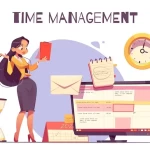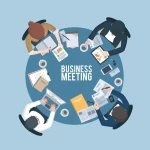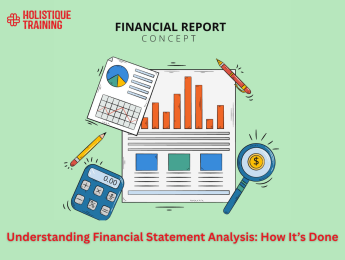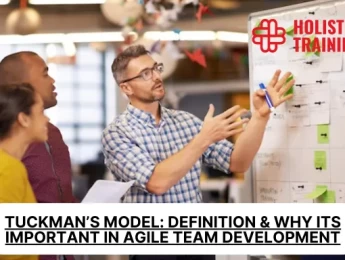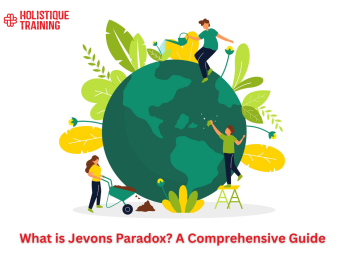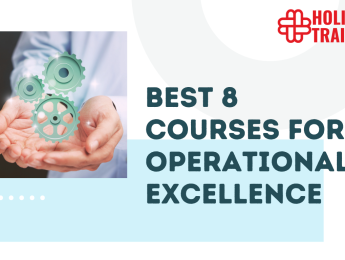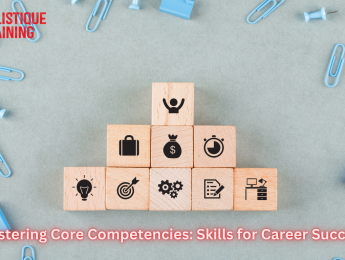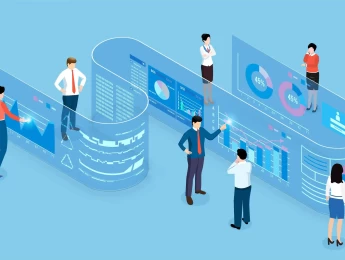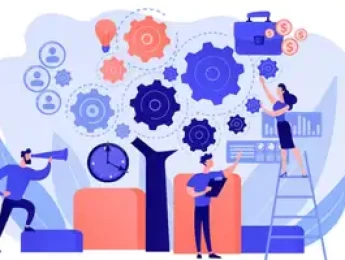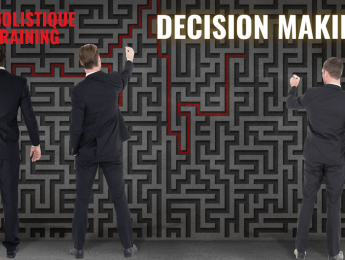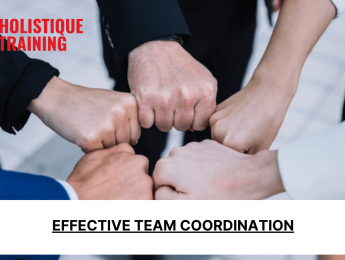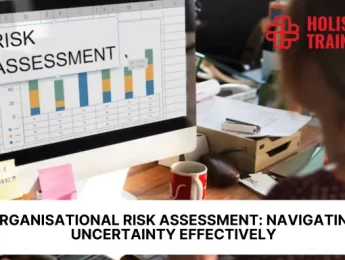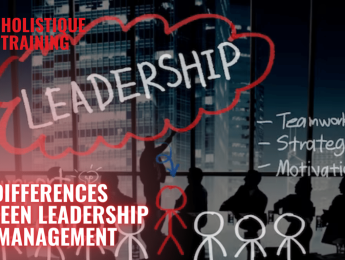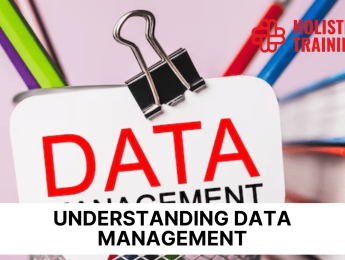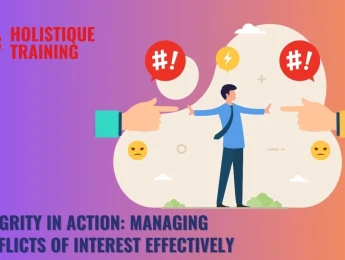- Table of Contents
- Introduction
- What are Meeting Minutes?
- The Importance of Writing Meeting Minutes
- Providing a Record of Key Decisions
- Ensuring Accountability
- Serving as Legal Documentation
- Enhancing Communication Across Teams
- Tracking Progress Over Time
- Supporting Organisational Memory
- Improving Meeting Productivity
- What Should You Include When Writing Meeting Minutes?
- 1. Meeting Details
- 2. List of Attendees
- 3. Agenda Items
- 4. Decisions Made
- 5. Action Items
- 6. Summary of Discussions
- 7. Next Meeting Information
- Who Should Write the Meeting Minutes?
- The Meeting Minute Process
- 1. Pre-Planning
- 2. Record Taking During the Meeting
- 3. Collecting Copies of Presentations or Reports
- 5. Writing the Final Draft
- 6. Requesting Approval from Leadership
- 7. Delivering the Meeting Minutes
- Meeting Minutes Template
- Tips for Writing Meeting Minutes
- 1. Be Prepared Before the Meeting
- 2. Use an Agenda as a Framework
- 3. Focus on Action Items and Decisions
- 4. Be Clear and Concise
- 5. Stay Neutral and Objective
- 6. Use Templates for Consistency
- 7. Review and Edit Your Notes
- 8. Distribute Minutes Promptly
- How Do Meeting Minutes Differ in Remote Teams?
- Leveraging AI Tools for Efficiency
- Conclusion
Introduction
Recording meeting minutes may seem simple, but it holds tremendous value in ensuring the productivity and accountability of any organisation. In this post, we’ll explore meeting minutes, why they matter, and how to write them effectively. From understanding the minute-taking process to following best practices, this guide provides a comprehensive look into creating meeting minutes that enhance decision-making and drive actionable results.
What are Meeting Minutes?
Meeting minutes are the official written record of the discussions, decisions, and actions that take place during a meeting. These records serve as a reference for participants and those who couldn’t attend, ensuring that key points are documented and followed up on. Typically, they include the meeting’s date, time, location, attendees, agenda items, and any decisions or next steps agreed upon.
Far from being simple summaries, meeting minutes provide a detailed account of the meeting’s proceedings, allowing stakeholders to track progress, stay aligned with objectives, and hold teams accountable for actions discussed.
The Importance of Writing Meeting Minutes
Meeting minutes play a critical role in ensuring that conversations, decisions, and tasks discussed during meetings are properly recorded and actionable. Though often seen as a mundane task, well-documented meeting minutes provide significant value across multiple levels of an organisation. They serve as a historical record, ensure accountability, enhance communication, and can even have legal implications. Let’s explore the reasons why writing meeting minutes is an essential practice.
Providing a Record of Key Decisions
Every meeting brings together different perspectives, expertise, and opinions, which culminate in critical decisions that guide the future of a project, initiative, or organisation. Meeting minutes capture these decisions in detail, acting as a permanent record. Without proper documentation, details of what was agreed upon can easily be forgotten or misinterpreted, especially in meetings where complex issues are discussed.
The record of decisions allows participants and other stakeholders to revisit what was agreed upon, ensuring clarity around the meeting outcomes. This is especially helpful when disagreements arise later on or when employees need to verify the rationale behind a decision. It provides an accurate reference point, preventing misunderstandings and promoting transparency within the organisation.
Ensuring Accountability
One of the most important functions of meeting minutes is ensuring accountability. Meetings often lead to the assignment of tasks and responsibilities, and without proper documentation, action items can be forgotten or overlooked. Meeting minutes ensure that these responsibilities are clearly assigned, with specific names and deadlines attached to each task.
By recording who is responsible for each action item and the expected timeline, the minutes provide a system of accountability. Team members can no longer claim they weren’t aware of their duties or deadlines because these responsibilities are documented. This creates a sense of ownership among individuals, promoting follow-through on commitments made during the meeting. Additionally, leaders can use the minutes to track progress and follow up with team members on their assigned tasks, ensuring projects remain on schedule.
Serving as Legal Documentation
In certain settings, particularly in corporate governance, board meetings, or large projects, meeting minutes serve a critical legal purpose. They provide an official record of decisions that may need to be referenced in legal disputes, audits, or regulatory reviews. In many countries, meeting minutes are required by law for organisations like non-profits, corporations, or government bodies.
In legal or compliance scenarios, properly recorded minutes can prove that decisions were made in good faith, in line with the organisation’s policies, or even required by law. For example, meeting minutes may serve as evidence that a company’s board of directors approved a particular decision, such as issuing shares or changing executive leadership.
If litigation ever arises regarding the meeting's outcomes, minutes serve as a key piece of documentation. Well-written minutes can protect organisations by providing proof that proper procedures were followed and that decisions were documented accurately and transparently.
Enhancing Communication Across Teams
Another critical aspect of meeting minutes is their ability to enhance communication across departments, teams, and organisational levels. Meetings often involve a variety of participants with different roles, and not everyone can attend every meeting. However, everyone involved in a project or department needs to stay informed about key developments. Meeting minutes offer a structured and accessible way to communicate key points and decisions to those who weren’t in the room.
For example, a project manager can share meeting minutes with their team, ensuring that even those who couldn’t attend are aware of the latest updates, decisions, and action items. This promotes transparency and alignment across the organisation, ensuring that everyone is on the same page. Furthermore, it allows leadership to communicate changes or initiatives to broader teams efficiently.
Meeting minutes also serve as a tool to remind participants of what was discussed, preventing the need for redundant conversations. This streamlines workflows, reduces the risk of miscommunication, and ensures that meetings are truly productive by keeping everyone focused on the same goals.
Tracking Progress Over Time
Meetings often occur as part of ongoing projects, long-term initiatives, or recurring cycles, making meeting minutes an invaluable tool for tracking progress. They serve as a timeline, documenting what was discussed, what decisions were made, and how far the team has come since the last meeting.
Studies indicate that as many as one-third of meetings may be unnecessary. This suggests that organisations must carefully evaluate the effectiveness of their meetings, highlighting the importance of detailed meeting minutes to ensure that time is well spent. By reviewing previous meeting minutes, teams can compare past discussions with current goals, ensuring continuity and alignment over time. They can also evaluate whether past action items have been completed and whether timelines are being followed. This creates a clear picture of how decisions evolve, how challenges are addressed, and how far the team has progressed toward their goals.
Additionally, meeting minutes make it easier to identify patterns or recurring issues that may need to be addressed. If a certain task keeps coming up in multiple meetings without resolution, leadership can intervene to ensure that resources are allocated to move the project forward.
Supporting Organisational Memory
Organisational memory is the collective knowledge of an organisation, and meeting minutes serve as a vital component in preserving this memory. When key personnel leave, retire, or change roles, the detailed documentation provided by meeting minutes allows new team members or successors to understand the decisions and strategies implemented in the past.
Without proper documentation, organisations risk losing valuable knowledge and experience, leading to inefficiencies, repeated mistakes, or slow progress on long-term goals. Meeting minutes offer a historical record that can be referenced when developing new strategies, continuing old projects, or onboarding new leaders.
This record also helps teams avoid redundancy. When new teams or members take over a project, they can look back on previous meetings to see what approaches were tried, which ones worked, and what issues were already resolved. This streamlines future discussions and decisions by preventing teams from rehashing old topics unnecessarily.
Improving Meeting Productivity
Finally, writing meeting minutes helps improve overall meeting productivity. When participants know that their discussions and decisions will be documented, they are more likely to stay focused and avoid unnecessary digressions. Having structured, recorded minutes encourages participants to stay on topic, as they know the outcome will be summarised and shared with a broader audience.
Additionally, reviewing previous meeting minutes before a new meeting helps keep discussions on track by reminding participants of what was previously discussed, what progress has been made, and what issues still need to be addressed. This preparation leads to more meaningful and productive meetings, saving time and resources in the long run.
In short, the importance of writing meeting minutes must be considered. They are vital for recording decisions, ensuring accountability, enhancing communication, supporting legal documentation, and tracking organisational progress. Meeting minutes not only provide clarity and structure but also act as a powerful driver of productivity, alignment, and long-term success for any organisation.
What Should You Include When Writing Meeting Minutes?
Creating effective meeting minutes requires attention to detail and a focus on the most important elements. Here’s what should always be included:
1. Meeting Details
Start with the meeting’s basic information: the date, time, location, and purpose of the meeting. This context helps those reading the minutes understand the background of the discussion.
2. List of Attendees
Include a list of everyone present at the meeting. Also, note any key individuals who were absent but invited, as this will clarify participation and responsibilities.
3. Agenda Items
Follow the meeting agenda closely. Record each agenda item as it is discussed, ensuring that the flow of the meeting is reflected accurately.
4. Decisions Made
Document all key decisions and agreements reached during the meeting. This might include votes taken, strategies decided upon, or agreements about timelines.
5. Action Items
Action items are critical in meeting minutes. Clearly list the tasks, who is responsible for each task, and the deadlines for completion. This ensures accountability and follow-up.
6. Summary of Discussions
While you don’t need to capture every word said, provide a clear and concise summary of the main points discussed. Focus on the key ideas, questions raised, and any differing perspectives.
7. Next Meeting Information
If applicable, include the details for the next meeting—date, time, and potential agenda items.
KPI | Description |
Timeliness of Distribution | Minutes shared within 24 hours of the meeting |
Action Item Completion Rate | Percentage of tasks completed by deadlines |
Attendance Consistency | Ratio of attendees present versus invited participants |
Follow-Up Feedback | Team satisfaction rating on clarity of minutes |
Recurring Issues Identified | Number of repeated topics noted across meetings |
Table: KPIs of Writing Meeting Minutes
Who Should Write the Meeting Minutes?
A study byFellow reveals that 40% of managers now spend over 15 hours per week in meetings, consuming nearly 40% of their time. Back in 2020, this figure was just 25%. With all these meetings, managers will have a hard time juggling all the information presented to them and will need a helping hand in writing meeting minutes. Typically, the role of minute-taker is assigned to someone with strong organisational skills and attention to detail. This person is usually an administrative assistant, project manager, or a team member designated by leadership. It’s important that the individual is familiar with the meeting's objectives and understands the topics being discussed. Ideally, the minute-taker is neutral, ensuring no bias creeps into the documentation process.
In smaller teams, the responsibility might rotate, but consistency is key in ensuring a unified format and style. Larger organisations often have a designated minute-taker to ensure continuity and professionalism.
The Meeting Minute Process
Writing effective meeting minutes is more than just typing during the meeting—it involves preparation, active listening, and post-meeting refinement. Let’s break down the process:
1. Pre-Planning
Before the meeting even begins, the minute-taker (often the meeting’s designated secretary or administrative assistant) should engage in pre-planning to ensure the process runs smoothly. This phase is about gathering the necessary materials and understanding the meeting’s agenda.
- Familiarise Yourself with the Agenda: Understanding the structure of the meeting and the topics to be discussed is essential. The agenda helps guide what information should be prioritised and ensures that the minute-taker is prepared to focus on relevant discussions.
- Know the Participants: Knowing who is attending the meeting allows the minute-taker to correctly identify speakers and track action items to specific individuals.
- Review Previous Minutes: If this is part of a series of ongoing meetings, reviewing previous minutes can provide context for current discussions, making it easier to follow up on unresolved matters or pending tasks.
By preparing ahead of time, the minute-taker can enter the meeting with a solid understanding of the objectives and participants, enabling them to focus on recording critical information efficiently.
2. Record Taking During the Meeting
The most intensive part of the meeting-minute process happens during the actual meeting. Here, the minute-taker must balance listening carefully, discerning important points, and taking concise yet comprehensive notes.
- Capture Key Points: Focus on recording the key aspects of the discussion rather than trying to transcribe the meeting verbatim. This includes major decisions, action items, deadlines, assignments, and any consensus reached. For example, it’s important to note decisions like “The team agreed to move forward with the marketing strategy by November” rather than recording all the back-and-forth deliberation that led to that decision.
- List Action Items and Assignments: When tasks are assigned, the minute-taker should record who is responsible and the expected timeline for completion. For example, “John will follow up with the vendor by Friday.”
- Keep Track of Attendance: It’s essential to record who attended the meeting, as well as who was absent. In formal meetings, this can be crucial for ensuring quorum was met or for following up on absent members.
- Document Motions and Votes: In formal meetings such as board meetings, it’s necessary to capture the exact wording of motions proposed, who made them, and the voting results.
While note-taking, staying as neutral and factual as possible is helpful, avoiding subjective language or personal opinions.
3. Collecting Copies of Presentations or Reports
During themeeting, participants may refer to documents, reports, or presentations. Collecting these materials is crucial for creating a comprehensive set of minutes. Visual aids such as charts or presentations often provide important details or data that complement the written notes.
- Request Copies of Supporting Documents: If a presentation is shown, the minute-taker should ask for a copy to attach to the final meeting minutes. This provides context to decisions made and offers a point of reference for readers.
Including these supporting documents can be helpful for individuals who couldn’t attend the meeting, as they will have access to all the materials used in discussions.
4. Reviewing Notes
After the meeting, the minute-taker should set aside time to review and clarify their notes. This stage ensures that everything captured during the meeting is clear and accurate before drafting the minutes.
- Check for Clarity: Ensure that all the notes are understandable, organised, and legible. If anything is unclear or seems incomplete, now is the time to seek clarification from colleagues who attended the meeting.
- Verify Assignments: Make sure that all action items and assigned responsibilities are correctly documented, as this will be important when creating the final draft.
By carefully reviewing the raw notes, the minute-taker can ensure no critical information is lost or misinterpreted before moving on to the next step.
5. Writing the Final Draft
Once the notes have been reviewed, the next step is to write a final draft of the meeting minutes. This step transforms the rough notes into a structured and polished document.
- Follow the Agenda Structure: Structure the document according to the agenda to keep the minutes organised and easy to follow. This ensures that the minutes flow logically and address each point of discussion in the order in which it occurred.
- Be Objective and Precise: Avoid subjective interpretations or commentary. Stick to facts, decisions, and action items. The tone should be professional, and the language should be clear and concise.
- Summarise Discussion, Don’t Transcribe: When summarising discussions, focus on the outcomes rather than trying to capture every detail. For instance, recording the decision made during a debate is more important than recounting the entire conversation.
The final draft should accurately reflect the meeting and be presented in a way that is easy to read and digest.
6. Requesting Approval from Leadership
After drafting the minutes, it’s common practice to request approval from the meeting’s leadership or chairperson before distributing them to attendees. This ensures that the minutes are accurate and reflect the key points discussed.
- Send the Draft for Review: Send the draft to the meeting chairperson or leader for approval. They may suggest revisions or clarifications, especially if any complex decisions or sensitive topics were discussed.
- Incorporate Feedback: If any changes are suggested during the review process, incorporate them into the final draft to ensure the minutes are as accurate as possible.
Approval from leadership also adds a layer of authority to the document, ensuring that it can be referenced confidently in the future.
7. Delivering the Meeting Minutes
Once the minutes are approved, the final step is distributing them to all relevant stakeholders.
- Distributed via Email or Shared Platform: Meeting minutes are often shared through email or uploaded to a shared platform where everyone can access them. It’s important to ensure that everyone receiving the minutes promptly receives them.
- Attach Supporting Documents: Include any supporting materials, such as presentations, reports, or charts that were referenced in the meeting. This helps provide a full picture of what was discussed and agreed upon.
This final step aims to ensure that all team members clearly and accurately understand the meeting outcomes and their respective responsibilities.
By following these structured steps, the process of writing meeting minutes becomes more manageable and thorough. From preparation to final distribution, every phase plays a crucial role in ensuring that the minutes accurately reflect the meeting's outcomes, serve as a reliable reference, and contribute to the team's overall productivity.
Meeting Minutes Template
A structured template helps capture all essential information during the meeting. Below is a simple and effective meeting minutes template that can be adapted to suit your organisation’s needs:
Meeting Title: [Title of the Meeting]
Date: [Date of the Meeting]
Time: [Start and End Time]
Location: [Physical or Virtual Location]
Attendees: [List of participants present]
Absent: [List of participants absent]
Note Taker: [Name of the person recording the minutes]
Agenda Items:
- Agenda Item #1:
- Summary of Discussion:
- Decisions Made:
- Action Items: [Who is responsible and deadline]
- Agenda Item #2:
- Summary of Discussion:
- Decisions Made:
- Action Items: [Who is responsible and deadline]
Additional Notes:
[Record any additional information, ideas, or relevant points that emerged during the meeting.]
Next Meeting:
- Date and Time: [Next meeting details]
- Location: [Next meeting location or virtual link]
- Proposed Agenda: [Items to discuss in the next meeting]
This template ensures that your meeting minutes are organised, easy to follow, and include all necessary details to drive actionable results.
Tips for Writing Meeting Minutes
Writing effective meeting minutes requires a balance of precision, clarity, and conciseness. By following best practices, minute-takers can ensure that their notes are both useful and professional. Below are eight key tips for improving the quality of your meeting minutes.
1. Be Prepared Before the Meeting
Preparation is key to ensuring the meeting-minute process runs smoothly. Familiarise yourself with the meeting’s agenda, and have an idea of the key discussion points ahead of time. This allows you to anticipate the most important information, saving time and reducing the chances of missing critical details during the meeting.
2. Use an Agenda as a Framework
The meeting agenda acts as a natural guide for structuring your minutes. By following the agenda, you ensure that the document remains organised and easy to navigate, which is crucial when attendees refer back to it. Using the agenda as a framework also helps the minute-taker maintain focus on relevant discussions, keeping the minutes succinct and on-topic.
3. Focus on Action Items and Decisions
Rather than recording every conversation detail, focus on the key outcomes, decisions, and action items. This makes the minutes more useful for stakeholders by highlighting what needs to be done, by whom, and within what timeframe. Capturing these items ensures that the meeting serves a practical purpose and provides clear accountability.
4. Be Clear and Concise
While capturing the main points of the discussion is important, the minutes should be concise and easy to read. Avoid jargon or overly complex language that might confuse readers. Instead, aim for clarity, ensuring that anyone reading the minutes—whether they attended the meeting or not—can understand the main takeaways and next steps.
5. Stay Neutral and Objective
Minutes should be an objective record of the meeting, not a personal interpretation of the discussions. Avoid inserting opinions or subjective commentary into the document. Staying neutral helps maintain professionalism and ensures that the minutes reflect facts rather than the biases or perspectives of the minute-taker.
6. Use Templates for Consistency
A consistent format or template helps streamline the minute-taking process and ensures uniformity across different meetings. This consistency makes the minutes easier to follow and allows readers to find the information they need quickly. Templates can also save time by providing a pre-structured format that only requires filling in specific details.
7. Review and Edit Your Notes
After the meeting, take time to review and edit your notes for accuracy and completeness. This step is crucial for correcting any mistakes or filling in gaps, especially if some points were unclear during the meeting. Reviewing the minutes ensures that everything is noticed, and the final draft is both polished and accurate.
8. Distribute Minutes Promptly
Timeliness is critical when it comes to distributing meeting minutes. Send the minutes to participants as soon as possible after the meeting while the discussions are still fresh in everyone’s mind. Prompt distribution helps ensure that all attendees know their responsibilities and can act on decisions without delay, boosting overall team productivity.
These best practices make the process of writing meeting minutes more efficient and ensure the document is a valuable tool for your team’s decision-making and follow-up efforts.
How Do Meeting Minutes Differ in Remote Teams?
Writing meeting minutes for remote teams has some unique considerations compared to in-person meetings. While the basic structure remains the same, the logistics of remote communication can introduce additional challenges. In remote meetings, it’s crucial to clarify who is speaking at any given time and to be even more precise about action items and deadlines since team members may be dispersed across different time zones.
Aspect | Virtual Meeting Minutes | In-Person Meeting Minutes |
Attendance Tracking | Tracked through the platform participant list or chat log. | Attendance taken manually or via sign-in sheet. |
Note-Taking | Can use digital tools, with access to recordings. | Handwritten or typed notes, no automatic recordings. |
Distribution of Minutes | Instant via email or collaboration tools like Slack. | Typically distributed via email or printed copies after meetings. |
Reference Materials | Easy to link documents within virtual platforms. | Hard copies distributed or emailed after the meeting. |
Action Items Follow-Up | Tasks can be assigned directly in digital project tools. | Requires manual follow-up via email or in-person reminders. |
Time Zone Considerations | Critical to consider different time zones for attendees. | Typically scheduled for local office hours or meeting times. |
Table: Comparison of Virtual and In-Person Meeting Minutes
Furthermore, remote meetings often rely on digital platforms like Zoom or Microsoft Teams, which usually allow recordings. These recordings can serve as a backup for the minute-taker, ensuring accuracy and filling in gaps if anything was missed during the live meeting. Additionally, shared documents or chat logs from the virtual meeting space can be incorporated into the minutes, providing a more comprehensive record of the discussion.
Lastly, the distribution of minutes in remote teams may be more immediate. Digital minutes can be shared directly through project management software or via email, ensuring that all team members receive and review the minutes in real-time regardless of location. This immediacy promotes a seamless follow-up process, making remote team collaboration as efficient as possible.
Leveraging AI Tools for Efficiency
Minute-taking can be time-consuming, so many professionals are turning to AI tools to streamline the process. AI-basedtranscription tools can record and transcribe meetings in real-time, providing a draft that the minute-taker can then refine.
These tools are particularly useful for capturing every word, ensuring nothing is missed during discussions. Additionally, some platforms allow users to search through the transcript for specific points, making the review process more efficient. However, it’s important to note that while AI tools can assist with the transcription, a human touch is still required to refine the final minutes, ensuring they are clear, concise, and actionable.
Conclusion
Writing effective meeting minutes is an essential skill that ensures accountability, facilitates follow-up, and accurately records key decisions. By understanding the importance of meeting minutes, following a structured process, and applying best practices, you can create minutes that contribute to your organisation's efficiency and productivity. Leveraging AI tools can further enhance this process, making it quicker and more accurate while allowing you to focus on refining and delivering high-quality meeting summaries.
For those looking to enhance their meeting management skills further, our Professional Meetings Management course offers in-depth training on mastering every aspect of the process. This course provides practical tools and insights for real-world application, from organising and conducting meetings to crafting comprehensive minutes. Enrol today to boost your effectiveness and ensure your meetings drive results.



